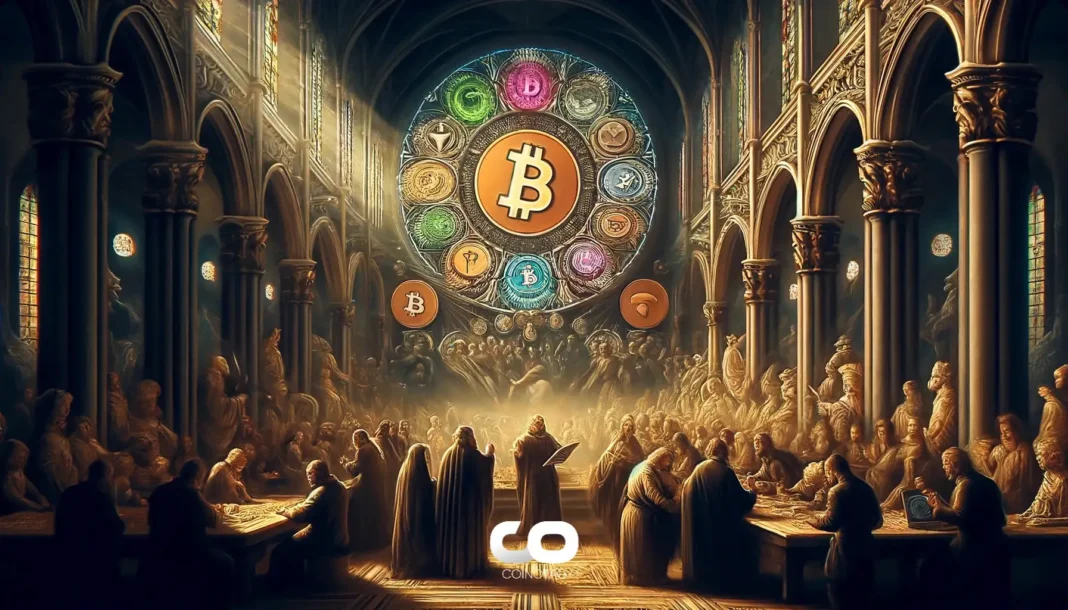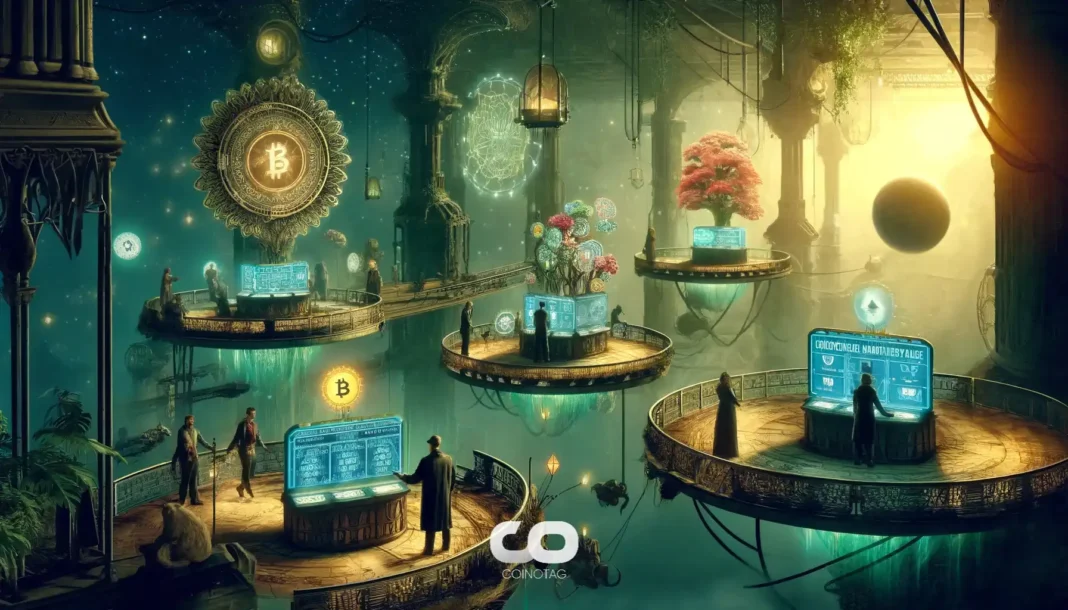James Howells lost 8,000 Bitcoin by accidentally discarding a hard drive in 2013, now worth approximately $950 million, highlighting the critical importance of secure crypto key storage.
-
James Howells’ lost Bitcoin hard drive was mistakenly thrown away during an office clean-up in 2013.
-
Despite years of efforts, local authorities denied excavation permits due to environmental and financial concerns.
-
COINOTAG experts emphasize this case as a vital lesson in self-custody and digital asset security.
Lost Bitcoin worth $950M lost forever after James Howells discarded a hard drive with 8,000 BTC. Learn vital crypto security lessons now.
What Happened to James Howells’ Lost Bitcoin and Why Is It Important?
James Howells lost 8,000 Bitcoin by accidentally throwing away a hard drive containing his private keys during a 2013 office clean-out. At that time, the Bitcoin were worth around $6.5 million, but today their value has soared to nearly $950 million. This incident highlights the critical risks of self-custody in cryptocurrency and the irreversible nature of digital asset loss.
Why Was Retrieving the Lost Bitcoin So Difficult?
Howells’ attempts to recover the hard drive from a landfill were blocked by Newport City Council due to environmental hazards, high excavation costs, logistical challenges, and health and safety risks. These factors made the search for the Lost Bitcoin practically impossible despite his persistent efforts.
| Metric | Value in 2013 (Approx.) | Value in 2024 (Approx.) |
|---|---|---|
| Amount of BTC | 8,000 BTC | 8,000 BTC |
| Total USD Value | $6.5 Million | $950 Million |
What Are the Key Lessons from the Lost Bitcoin Incident?
The Lost Bitcoin story underscores the importance of secure private key management. Cryptocurrency owners must understand that losing access to private keys means losing access to funds permanently. Key lessons include:
- Redundant backups: Store private keys or seed phrases in multiple secure locations.
- Cold storage: Use hardware wallets to keep keys offline and safe from hacks.
- Physical security: Protect hardware wallets and backups from theft, damage, or accidental disposal.
- Self-custody responsibility: Recognize that control over assets requires diligent security practices.
- Digital estate planning: Prepare for asset management in case of incapacitation or death.
How Does This Incident Reflect on the Broader Crypto Community?
James Howells’ experience is a stark reminder to the crypto community about the irreversible nature of blockchain transactions and the absolute necessity of safeguarding private keys. Millions of Bitcoin are estimated to be permanently lost worldwide due to similar mistakes, emphasizing the need for education and robust security measures.
Frequently Asked Questions
What exactly happened to James Howells’ hard drive with the Lost Bitcoin?
In 2013, James Howells accidentally threw away a hard drive containing the private keys to 8,000 Bitcoin during an office clear-out, mistaking it for an old, empty device.
Why couldn’t James Howells simply dig up the hard drive from the landfill?
Newport City Council denied excavation requests due to environmental risks, high costs, logistical difficulties, and health and safety concerns associated with landfill digging.
How much is the 8,000 Lost Bitcoin worth today?
The 8,000 Bitcoin are currently valued at approximately $950 million, a massive increase from the $6.5 million value in 2013 when discarded.
Are there other known cases of large amounts of Lost Bitcoin?
Yes, millions of Bitcoin are believed to be permanently lost due to forgotten passwords, lost private keys, or destroyed storage devices, making Howells’ case one of the most notable.
What are the key lessons for cryptocurrency owners from this Lost Bitcoin story?
Secure backups, cold storage, understanding self-custody risks, and digital estate planning are essential to prevent irreversible loss of digital assets.
Key Takeaways
- Lost Bitcoin Incident: James Howells lost 8,000 BTC by discarding a hard drive in 2013.
- Recovery Challenges: Environmental, financial, logistical, and safety issues prevented landfill excavation.
- Crypto Security Lessons: Emphasizes the vital need for secure key management and digital estate planning.
Conclusion
The Lost Bitcoin saga of James Howells is a powerful lesson on the irrevocable risks of self-custody in cryptocurrency. While the potential rewards of digital assets are immense, so are the responsibilities. This story urges all crypto holders to prioritize secure storage, backups, and estate planning to safeguard their wealth in the evolving digital economy.

Imagine holding the key to a fortune, only for it to slip through your fingers, ending up in a place where retrieval seems impossible. This is the unbelievable reality for James Howells, an IT engineer whose story has become a cautionary tale in the cryptocurrency world. For over a decade, Howells has been on a relentless quest to recover a hard drive containing 8,000 units of Lost Bitcoin, a digital treasure now valued at close to a billion dollars. However, recent developments confirm that his monumental search has finally come to an end, with the tokens now considered permanently out of reach.
The Unfathomable Loss: What Happened to the Lost Bitcoin?
The saga began in 2013, a time when Bitcoin was still a niche concept, far from the global phenomenon it is today. James Howells, like many early adopters, had mined Bitcoin on his personal computer. He accumulated a substantial amount, storing the private keys on a hard drive. The crucial mistake occurred during a clear-out of his office. Amidst a pile of old computer parts and general clutter, the fateful hard drive was mistakenly thrown into a rubbish bin. It was an oversight that would haunt him for years to come, transforming a simple act of tidying into a multi-million-dollar blunder involving Lost Bitcoin.
At the time of disposal, the 8,000 BTC were valued at approximately $6.5 million. While a significant sum, it pales in comparison to its current worth. Bitcoin’s meteoric rise over the past decade has amplified the scale of this loss to staggering proportions. The story of Howells serves as a stark reminder of the volatile yet immensely rewarding nature of digital assets, and the critical importance of secure storage.
A Decade of Pursuit: Why Was Retrieving the Lost Bitcoin So Challenging?
Following his realization, Howells embarked on an almost Sisyphean task: convincing the Newport City Council to allow him to excavate the landfill where he believed his hard drive lay buried. His requests, however, were repeatedly denied. The reasons cited by the council were multifaceted and complex, highlighting the significant hurdles involved in such an undertaking.
- Environmental Concerns: Landfills are complex ecosystems. Disturbing them carries risks of releasing hazardous waste, methane gas, and other pollutants into the environment. The council expressed significant concerns about the potential ecological impact of a large-scale excavation.
- Financial Burden: The cost of excavating a landfill of that size is astronomical. Howells proposed various funding models, including offering a percentage of the recovered Bitcoin to the council, but the financial liability and operational costs remained a major sticking point.
- Logistical Nightmare: Locating a small hard drive within tons of compacted waste is akin to finding a needle in a haystack. The landfill is vast, and the exact location of the hard drive was uncertain, making any search effort incredibly difficult and potentially fruitless.
- Health and Safety Risks: Landfill operations involve heavy machinery and dangerous conditions. Ensuring the safety of workers during an excavation of this nature would require extensive planning and resources.
Despite these formidable obstacles, Howells remained undeterred for years. He developed elaborate plans, involving AI-powered sorting machines and a team of experts, hoping to present a compelling case. Yet, each attempt met with the same resolute refusal from local authorities, leaving his precious Lost Bitcoin buried beneath layers of refuse.
The Peril of Digital Assets: Crucial Lessons from Lost Bitcoin
The story of James Howells serves as a powerful, albeit painful, lesson for anyone involved in the world of cryptocurrencies. Unlike traditional assets held in banks, digital assets like Bitcoin often rely on self-custody. This means the owner is solely responsible for the security of their private keys, which are the access codes to their funds. If these keys are lost, stolen, or destroyed, the associated cryptocurrency becomes irrecoverable – effectively becoming Lost Bitcoin.
What can we learn from this tragic incident to prevent similar losses?
- Redundant Backups: Always create multiple backups of your private keys or seed phrases. Store them in different, secure physical locations, away from your primary device.
- Cold Storage Solutions: For significant amounts of cryptocurrency, consider using hardware wallets (cold storage). These devices keep your private keys offline, making them immune to online hacks.
- Physical Security: Treat your hardware wallets, seed phrases, and backup files with the same care you would treat physical cash or gold. Protect them from damage, theft, and accidental disposal.
- Understanding Self-Custody: Fully grasp the implications of self-custody. It offers unparalleled control but comes with significant responsibility. There is no ‘forgot password’ option in crypto.
- Digital Estate Planning: Consider how your digital assets will be managed in the event of your incapacitation or death. This often involves securely sharing access details with trusted individuals through legal mechanisms.
Howells’ experience underscores that while the potential for gains in crypto is immense, so too are the risks associated with improper handling of private keys. His efforts to retrieve the Lost Bitcoin highlight the irreversible nature of such errors.
The Finality of the Search: A Billion-Dollar Dream Lost
According to a recent X post by Bitcoin Archive, James Howells has finally abandoned his decade-long quest. This decision marks the official end of an extraordinary effort to recover what would now be one of the largest single caches of Lost Bitcoin. The tokens, once a tangible part of his digital portfolio, are now permanently inaccessible, adding to the estimated millions of BTC that are believed to be permanently out of circulation due to lost keys, forgotten passwords, or accidental destruction of storage devices.
The finality of Howells’ decision resonates deeply within the crypto community. It’s a somber reminder of the unforgiving nature of the blockchain: transactions are irreversible, and ownership hinges entirely on the integrity of one’s private keys. For Howells, a dream of immense wealth has dissolved into a stark reality of irreversible loss. The value of his Lost Bitcoin, which once offered a glimmer of hope for retrieval, now stands as a monument to a costly mistake.
Reflecting on the Lost Bitcoin Saga
The story of James Howells and his Lost Bitcoin is more than just a tale of misfortune; it is a compelling narrative that encapsulates the promises and perils of the digital age. It speaks to the incredible potential of decentralized finance, where individuals can control their own wealth, but also to the immense responsibility that comes with such freedom. While Howells’ pursuit has ended without success, his story will undoubtedly continue to serve as a powerful cautionary example, urging every crypto enthusiast to prioritize security, diligence, and foresight in managing their digital assets.
The ultimate consequence of an irreversible mistake.






